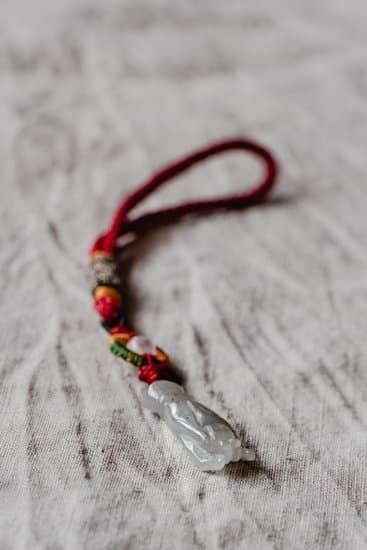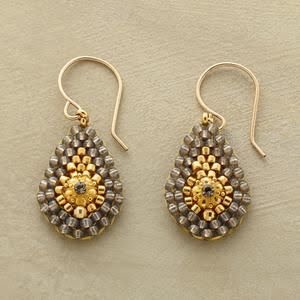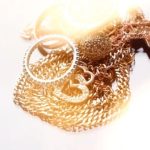When looking to buy materials to make jewelry, it can be an overwhelming task with so many choices, not to mention options from stores both in-person and online. This can take time and energy away from actually creating the pieces. In the spirit of saving time for the more creative aspect of jewelry making, here are some tips and tricks for shopping smarter:
First of all, make sure that you know exactly what you need by having a well-detailed list of needs and wants at hand before going on a shopping trip. That way you won’t wind up coming home with items that don’t fit into the project or plan you have in mind. Having a picture or two ready can really help ensure accuracy when searching online.
Along with this list, try to get a sense of what prices you will likely be dealing with ahead of time too. Knowing a ballpark figure will do wonders for keeping budgets in check too. Even if it’s just a rough estimate based off research online, try to get as close as possible without being wasteful on resources.
Thirdly, consider buying simple components in bulk if they’re used often when making jewelry items such as headpins or ear wires from metal or findings from certain types of plastic beads. These can usually be found far cheaper in larger quantities which adds up over time for bigger savings down the line even just for a single project.
Lastly, investigate what types of deals and discounts local stores may have available since they may view it as an opportunity to stand out against competition even if they are strictly brick-and-mortar shops.
Working on a Budget
Jewelry making is a fun, creative endeavor, but it can also be expensive. Although you may be tempted to purchase the cheapest materials available, this could lead to poor quality jewelry that’s not as durable or attractive. That said, there are ways to buy jewelry making materials at an affordable price without compromising on quality.
One of the simplest ways to find quality supplies at a bargain price is by shopping online. Many online stores offer discounts and deals that may not be available at retail outlets.
Additionally, many online retailers offer bulk orders which can help you save even more money when buying multiple supplies. Most online retailers also have detailed descriptions and reviews for each item that can help guide your purchasing decision so you can get what you need without breaking the bank.
Shopping on a budget doesn’t mean missing out on decorative features like semi-precious stones and beads. Many craft stores sell these at discounted prices or stock discontinued colors or designs in their clearance section. These pieces can add unique flair to your designs while still remaining affordable.
You could also opt for dollhouse supplies which often include numerous miniature gems, crystals and other decorations at great prices. Local flea markets are also excellent places to find interesting materials that bring unique stories with them – perfect for veteran jewelry makers looking to craft something truly special.
Selecting Versatile Supplies
Having the right tools and supplies to make jewelry is essential for the success of any project, whether novice or expert. There are a variety of options available when shopping for materials to make jewelry. Many times, beginners will start with basic items like beads, string, clasps and findings which are relatively inexpensive and easy to use.
Experienced jewelry makers may want to consider investing in more advanced supplies such as pliers and wire cutters. These high-end tools allow for greater precision when working with intricate designs and finishing pieces.
Various types of pliers, including round nose pliers, flat nose pliers and chain nose pliers can be used for a wide range of tasks from cutting components to closing jump rings. Wire cutters are also handy when needed to trim excess wire during the assembly phase of a piece or appling adjustments to various parts after assembly has been completed.
In addition to specialized tools like pliers, many experienced crafters prefer more complex materials such as gemstones, pearls and cabochons for their projects. Semi-precious stones come in an array of colors and shapes that can add sparkling beauty to any craft design.
Precious diamonds or pearls may also be added as desired depending on budget constraints. Artistic antiqued metals like copper, brass or bronze can provide a distinct look in combination with various color gems or rocks adding unique flair to every creation.
With an assortment of materials available ranging from fundamentals like binding strings or wiring up to semi-precious gemstones it’s important not forget proper storage containers too; boxes specifically designed for storing pieces safely ensuring longer life spans by protecting them against dust, moisture and other corrosive elements when not actively making them into wearable jewelry designs.
By taking the time find quality supplies at the right price point along with proper storage solutions anyone looking too create their own unique style will have all they need get started on any project.
Finding Inspiration
When it comes to making jewelry, the possibilities are endless. From custom-made earrings and bracelets to intricate pendants, necklaces and rings, each piece can be made as unique as the person wearing them. Although there is no right or wrong way of creating a piece of jewelry; knowing where to look for inspiration can help bring any visualization to life.
One way you can find inspiration is by shopping online or at local craft stores that offer supplies needed to create amazing pieces. Here you will find beads of various sizes, shapes and colors which are the staple items of jewelry making products.
You may also find wires, chains, cord or other materials required for various projects such as beading or hammering metals. Other products such as tools for cutting, drilling, filing and polishing should also be available to make any piece shine just the way you envisioned it.
You can also look for inspiration in books – both digital and printed – focused on jewelry crafting. These can provide detailed instructions with plenty of tips on how beginners can make their first pieces.
Experienced makers should also find some good advice here so that they can improve their skills even further. Some library have digital collections featuring instructional ebooks specialized on this topic; alternatively YouTube videos professionally produced by experts serve great sources of instructions, advice and new ideas around this hobby too.
Key Ingredients for Making Quality Jewelry
Making quality jewelry requires the right materials. The most common metals used in making jewelry are copper, silver and gold, especially for those just getting started. Copper is a popular choice because it is relatively inexpensive.
It is also strong and easy to work with given its malleability, but it can tarnish easily unless treated well. Silver is a good alternative if you are looking for something that will last longer and maintain its look but is more expensive than copper. Gold also lasts longer than other metals and blends well with many other metals like copper or zinc to create an alloy.
Gemstones are also important when creating jewelry designs. Although diamonds are arguably the most iconic gemstone found in jewelry, there are many others that can be used. The type of stone you choose depends on the design you have in mind and the budget you have available. Above all else, choose gemstones that have good quality and clarity as this will make your piece much more impressive overall.
Aside from metalalloys and gemstones, metalsmiths also need to consider how they join pieces together when constructingjewelry designs. Jump rings, clasps/crimps and headpins are necessary tools for any jewelry-maker toolbox as each piece requires different ways of being attached together securely so pieces don’t come apart easily during wear or after cleaning them from time to time with specific cleaning products depending on their material composition.
Soldering techniques can also provide valuable detail when dealing with complex pieces by connecting multiple components in one step instead of using several separate fastenings which take longer to be added individually and often require heating or specialized tools specifically designed for such tasks like soldering tweezers or burnishers among others.
Learning these methods can help speed up your process while saving money in comparison to outsourcing your jewelry-making process entirely – plus , having a truly personalized design makes even better results whether though your own craftsmanship or by mixing it with already manufactured parts.
Shopping for Beads and Charms
When you decide to make jewelry, it is important to get the right supplies. You should have a selection of beads and charms that come in many colors and styles. This will ensure that your jewelry pieces look unique and stylish. Here are some tips that can help you pick out the perfect color and style of beads and charms for your jewelry projects.
The first thing to consider when shopping for beads and charms is what type of color theme you want for your jewelry piece. If you want something bright and cheerful, then select bright colors like yellow, pink or blue.
On the other hand, if you want something more subtle, choose softer hues such as pastels or muted tones like grey or brown. Once you have selected a general color theme, it’s time to start thinking about specific types of beads such as glass or plastic ones in versatile colors like black or white which can match any piece of jewelry perfectly.
In addition to choosing the right colors for your beads and charms, it is also important to consider their sizes. Look for bead sizes that are dimensionally appropriate for the item that needs adornment – if it’s a bracelet then don’t buy bigger beads because this will make your bracelet very heavy; likewise, if it’s an earring, then don’t choose too small beads because this won’t be visible from a distance.
Be sure to measure all the items so that you know how large/small they need to be each item of jewellery looks beautiful with its accompaniment of perfect sized beads and charms.
The final factor to consider is the style of charm that you pick out. There are endless possibilities here so go with whatever resonates with what makes you feel good.
Whether it’s a classic royal look with pearls or featuring natural stones like quartz – there are plenty of styles available on the market today. And remember: no matter what type of materials you buy – whether they’re expensive or affordable – have fun creating unique pieces that express your personal style.
Securing the Perfect Setting
When creating jewelry, the setting or components can make or break the overall design. Carefully selecting an appropriate setting for your piece is one of the most important decisions when it comes to bringing your one-of-a-kind creation to life.
Whether it’s metals, seed beads and crystals, precious stones like diamonds, pearls and opal – or clasps to finish off your design – having a good selection at hand will ensure that no idea gets compromised in its journey from vision to reality.
Buying jewelry components can be daunting at first but taking a few key considerations into account can help you focus on exactly what you need for each creative project. A great way to shop for all types of supplies is by doing research first. Identifying trends or ideas you want to incorporate into your work will enable you to shop with purpose and avoid purchasing unnecessary pieces that could potentially get left behind in an overflowing bead box.
The quality of materials shouldn’t be overlooked either – this is essential when considering long term wearability of your design and also reflects on the value of any piece you may have created as a professional designer or artist.
Choose only premium materials, sourced responsibly from quality sellers who carry ethically produced items – these are usually marked with special certifications or labels signifying their origin and production process along with other unique characteristics such as rarity (in the case of some stones and crystals).
Pay attention to the kind of finishes available too; gold plated items are often much more affordable than solid gold ones, which adds another layer of flexibility for customising pieces without compromising on their quality.
Taking time with this step is fundamental when planning out any type of jewellery project. Experimenting is encouraged so gather as many references as possible before deciding on a particular component – online marketplaces are perfect for this task though buying locally whenever possible not only provides peace of mind but also helps support small businesses which play such an important role within our communities.
Finding Sources for Eco-Friendly and Sustainable Materials
When buying materials used for making jewelry, eco-friendly and sustainable materials are always preferable. Whether you’re a professional jewelry maker or just a hobbyist, ethical sourcing should be a priority. Recycled metals such as gold, silver and bronze are some of the most common sustainable sources of material for jewelry.
Additionally, high quality stones and gems are available from many certified and reliable mines around the world. Furthermore, these sources create jobs and stimulate local economies on top of providing highly sought-after materials that can last a lifetime.
In addition to metal and stones, recycled glass is rapidly gaining popularity when it comes to finding sources of sustainable materials for jewelry making. These gorgeous pieces can incorporate multiple colors while still retaining durability in comparison to traditional glass beads.
This can not only create aesthetically pleasing pieces but also help restore important resources which would otherwise end up in waste repositories. Furthermore certain types of reclaimed wood may also be suitable for certain types of jewelry projects should the need arise.
Finally there are also vegan options when considering craftsmanship materials such as bone substitutes as well as alternatives to leather if desired, such as environmentally friendly vegetable tanning leather found in various organic finishes. Additionally pleather – an artificial leather made ethically without harming animal skin – is another great option for those preferring the look or feel of real leather with sustained resources in mind.
With so many options available these days there really is no excuse not to use sustainable materials when creating beautiful jewelry pieces that will last a lifetime.

Welcome to my jewelry blog! My name is Sarah and I am the owner of this blog.
I love making jewelry and sharing my creations with others.
So whether you’re someone who loves wearing jewelry yourself or simply enjoys learning about it, be sure to check out my blog for insightful posts on everything related to this exciting topic!





